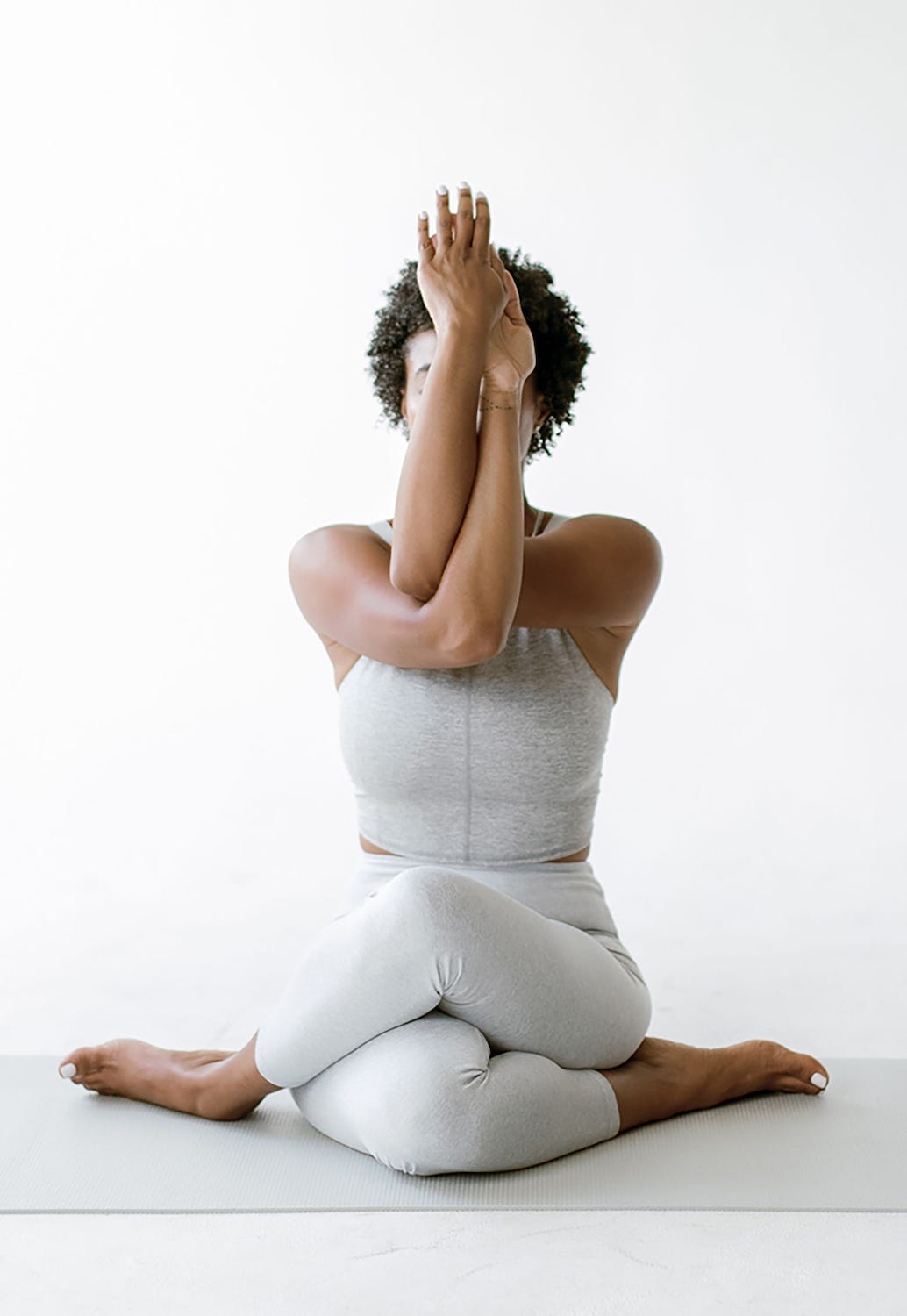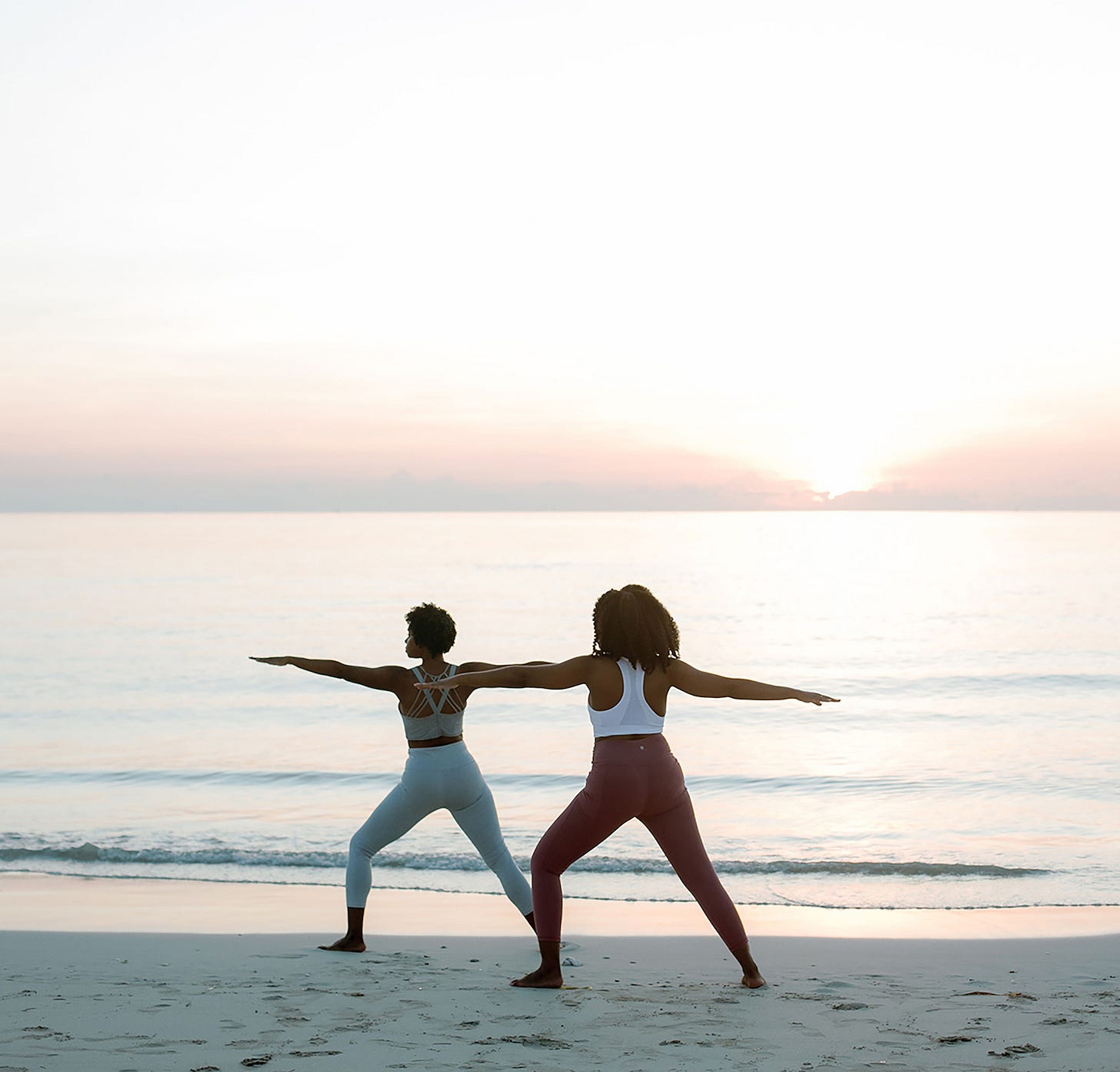BeWell | The Midst beauty, style & wellness newsletter
My body resisted the deep twist, my breath was shallow, and my mind was fixated on holding the pose — on doing it right.
“Find steadiness and ease," my instructor reminded us. “Flow … let go.”
Let go? I had always believed strength meant pushing through, enduring. But as I exhaled and softened, something unexpected happened — my body realigned, my breath deepened, and instead of falling, I found stability. I found balance.
That moment taught me something profound: clinging creates tension, while release creates space. And this isn’t just yoga philosophy — it’s neuroscience.
The science of letting go
Our brains are wired to resist change. The status quo bias, a cognitive tendency studied in behavioral psychology, makes us more likely to stick with what we know — even when it no longer benefits us. We hold onto jobs, relationships, and identities because they feel familiar, even when they no longer serve us.
But holding onto what isn’t working creates stress. Research shows that psychological attachment — whether to a negative thought pattern, a toxic relationship, or an outdated identity — activates the amygdala, the brain’s threat response center. This keeps us in a state of chronic stress, elevating cortisol levels and impacting both our mental and physical health.
Growth requires shedding old skin.
Alternately, the act of letting go activates the parasympathetic nervous system, shifting us into a state of calm. Studies on mindfulness and acceptance-based therapies show that releasing ideas of attachment reduces anxiety, improves emotional regulation, and even enhances cognitive flexibility — our ability to adapt and grow.
In yoga, this principle is called “aparigraha,” or non-attachment. In psychology, it’s called “cognitive reframing” — the ability to shift our perspective, allowing us to see that release isn’t loss, but an opportunity for transformation.
The weight of holding on
Midlife is full of accumulation. We spend years gathering — titles, responsibilities, relationships, stuff, and beliefs about who we are and what success should look like. Some of these things serve us. Others start to weigh us down.
But we hold on, convinced that letting go would mean losing something vital. A career we’ve invested decades in. A friendship that feels obligatory. A version of ourselves that no longer fits but feels too ingrained to release.
Yet, as research suggests, clinging to past identities can lead to stagnation, while those who embrace personal evolution experience greater well-being and life satisfaction. Growth requires shedding old skin.
One reason we resist letting go is a deep-seated discomfort with emptiness. This discomfort drive us to fill our lives — physically, emotionally, and mentally — because unfilled spaces can feel unsettling. But in yoga, every exhale is followed by an inhale. Every release is an opening. Letting go isn’t about ending; it’s about making room.
Studies in neuroplasticity — the brain’s ability to rewire and adapt — show that when we stop reinforcing old habits and thought patterns, we create space for new, healthier ones. Just as we strengthen new neural pathways through repetition, we strengthen our ability to let go through practice.
The practice of letting go
Letting go isn’t passive — it’s intentional. It requires both awareness and action. Here’s how we can engage with it, both scientifically and practically:
1. Recognize resistance
Notice what feels heavy, forced, or misaligned. Research shows that self-awareness activates the prefrontal cortex, helping us make more rational, growth-oriented decisions.
2. Reframe the narrative
Instead of seeing the release as a loss, view it as an opening. Cognitive-behavioral therapy (CBT) teaches that shifting perspective reduces emotional distress.
3. Use breath as a tool
Deep breathing triggers the vagus nerve, shifting us from stress mode (sympathetic nervous system) into relaxation mode (parasympathetic nervous system).
4. Engage in transition rituals
Research in behavioral science suggests that rituals — whether journaling, movement, or symbolic acts — help the brain process change. Just as we transition between yoga poses, we can create rituals to honor what we’re releasing.
5. Trust the process
Just as yoga teaches that balance is found in movement, not stillness, neuroscience confirms that adaptability leads to resilience.
A new kind of strength
For years, I equated strength with holding on. But yoga — and science — taught me that true strength is found in release. In midlife, we are not losing ourselves; we are evolving.
So, the next time you feel resistance — whether in your body, your mind, or your life — pause. Breathe. Ask yourself: Is this still serving me? And if not, exhale.
Keep reading with a 7-day free trial
Subscribe to The Midst to keep reading this post and get 7 days of free access to the full post archives.







